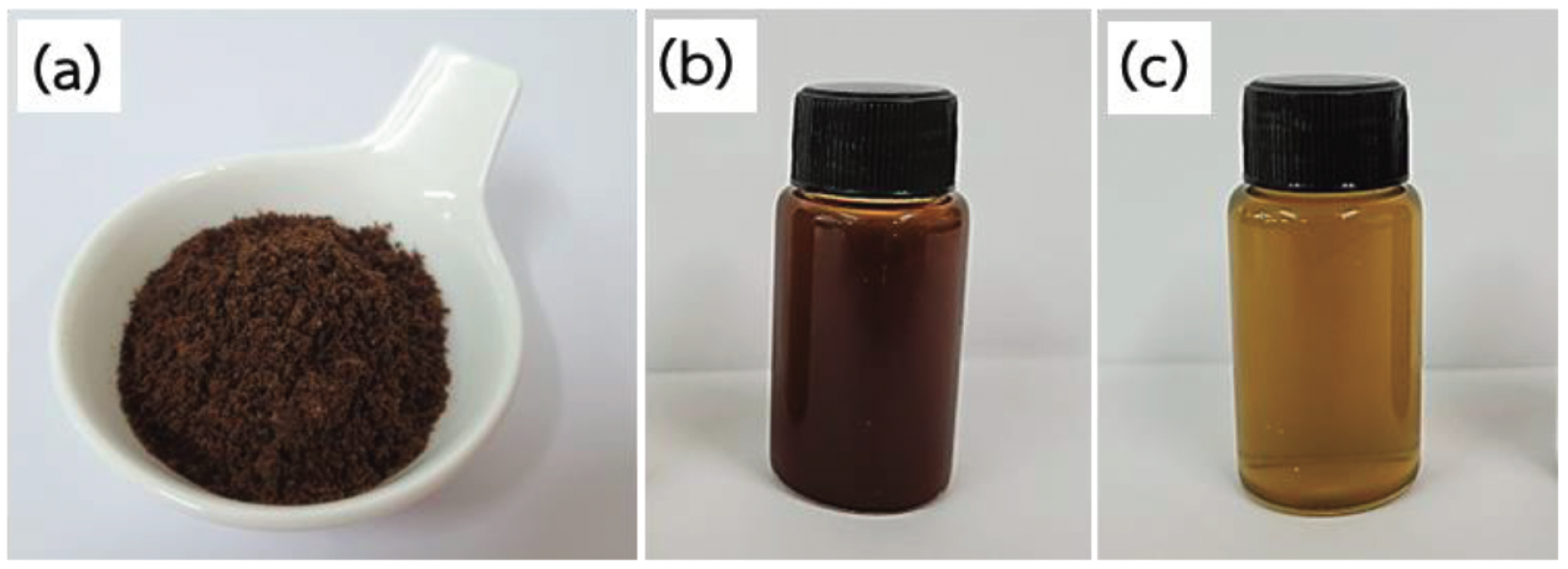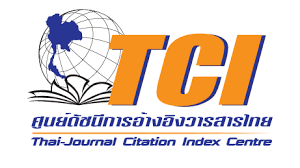Study on Antioxidant Activities of Soaps with Coffee Ground Extract and Soaps with Mixed Coffee Ground Extract and Mulberry Leaf Extract
Keywords:
Soap, Antioxidant Activity, Extract, Coffee Ground, Mulberry LeafAbstract
Background and Objectives: The objective of this research was to develop glycerin soap products containing Arabica coffee ground (Coffea arabica L.) extract, mulberry leaf (Morus alba L., c.v. Chiang Mai 60) extract, and coffee ground. Coffee ground contains phenolic compounds and caffeine, which exhibit antioxidant activity, helping to delay aging and reduce swelling and inflammation of the skin. Mulberry is a type of plant that is widely grown in Lopburi province. Mulberry leaves contain polyphenolic compounds, therefore exhibiting antioxidant activity.
Methodology: Coffee grounds were obtained from a coffee shop in Lopburi province. The coffee grounds were dried in a hot air oven at 80 °C for 10 hours. Extraction of coffee grounds was prepared by weighing 100 grams of coffee grounds and extracting with 500 mL of deionized water at temperature of 100 °C for 1 hour. After that, the extract was filtered through white cheesecloth and filter paper (Whatman no. 1). Mulberry leaves were obtained from mulberry farms grown in Lopburi province. The mulberry leaves were washed, air-dried, and then cut horizontally to a thickness of approximately 0.5 cm. Mulberry leaf extract was prepared by weighing 40 grams of mulberry leaves and extracting with 500 mL of deionized water at a temperature of 100 °C for 1 hour. Then, the extract was filtered with white cheesecloth and filter paper. A transparent glycerin soap base was used in this work. There are 8 formulas of soap, including control soap (formula S1), 3 formulas of soap with coffee ground extract (formula S2-S4), 1 formula of soap with coffee ground extract and mulberry leaf extract (formula S5), 2 formulas of soap containing coffee ground extract and coffee ground powder (Formula S6-S7), 1 formula of soap containing coffee ground extract, mulberry leaf extract, and coffee ground powder (S8). A soap was prepared by weighing 25 grams of glycerin soap base and melting the glycerin over low heat. After that, the prepared components were added. Then, the solution was stirred and poured into the oval silicone soap mold. Physical and chemical properties of soaps, including foreign matter, color values, erosion percentage, bubble volume, durability of the bubbles, and pH, were studied. Antioxidant activities of soaps were determined by the DPPH assay.
Main Results: Eight soap formulas with different ingredients were compared. The results indicated that all soaps had no foreign matter. The color values of soap with coffee ground extract, mulberry leaf extract, and coffee ground, as expressed in terms of L*, a*, and b*, were 13.81 ± 1.20 to 26.40 ± 0.97, 0.44 ± 0.13 to 1.36 ± 0.22, and 0.20 ± 0.24 to 4.76 ± 0.31, respectively. The pH values were 9.81 - 10.06. The erosion percentage, bubble volume, and durability of the bubbles were 14.83 ± 1.37 to 16.55 ± 1.45 %, 69.50 ± 1.50 to 73.00 ± 3.12 mL, and 66.00 ± 2.00 to 70.25 ± 2.65 mL, respectively. Antioxidant activities of soaps as determined by the DPPH assay were in the range of 1.66 ± 0.11 to 7.65 ± 0.02 ascorbic acid equivalent (AAE)/g soap. The results of the satisfaction assessment of the soap products obtained from a panel of 25 people were at a very satisfactory level.
Conclusions: All soap formulas developed had physical and chemical properties meeting the standards of bar soap product requirements. The developed soaps had higher antioxidant activities than the control soap. The coffee ground extract, coffee ground powder, or mulberry leaf extract added to soap increased the antioxidant activities of soap. It also allows for a variety of shades of soaps.
Practical Application: The developed soaps could serve as quality soap prototype products for a community. The soaps could also serve to increase the value of spent coffee grounds and local herbs.
References
Mekhora, C., 2015, “Coffee for Health,” Food, 45 (4), pp. 15-21. (In Thai)
Oestreich-Janzen, S., 2016, “Caffeine: Characterization and Properties,” pp. 556-572 in B. Caballero, P.M. Finglas and F. Toldrà (Eds.) Encyclopedia of Food and Health, Elsevier, Amsterdam.
Jeon, J.S., Kim, H.T., Jeong, I.H., Oh, M.S., Yoon, M.H., Shim, J.H., Jeong, J.H. and Abd El-Aty, A.M., 2019, “Contents of Chlorogenic Acids and Caffeine in Various Coffee-related Products,” Journal of Advanced Research, 17, pp. 85-94.
Vieira, A.J.S.C., Gaspar, E.M. and Santos, P.M.P., 2020, “Mechanisms of Potential Antioxidant Activity of Caffeine,” Radiation Physics and Chemistry, 174 (108968), pp. 1-6.
Fakkhong, K. and Yamsa-ard, S., 2021, “Value Chain and Market Opportunity of Thai’s Coffee Products to Enhance the Marketability Competitiveness among the ASEAN Countries,” Journal of Humanities and Social Sciences Thonburi University, 16 (1), pp. 56-67. (In Thai)
Lourith, N., Xivivadh, K., Boonkong, P. and Kanlayavattanakul, M., 2022, “Spent Coffee Waste: A Sustainable Source of Cleansing Agent for a High-performance Makeup Remover,” Sustainable Chemistry and Pharmacy, 29 (100826), pp. 1-7.
Benincá, D.B., Carmo, L.B.D., Grancieri, M., Aguiar, L.L., Filho, T.L., Costa, A.G.V., Oliveira, D.D.S., Saraiva, S.H. and Silva, P.I., 2023, “Incorporation of Spent Coffee Grounds in Muffins: A Promising Industrial Application,” Food Chemistry Advances, 3 (100329), pp. 1-10.
Phanomchaisawang, P., Tungkananuruk, K., Semvimol, N. and Veesommai, C., 2022, “Ammonium and Orthophosphate Adsorption Efficiency of Coffee Ground and Coffee Ground Charcoal,” KKU Research Journal (Graduate Studies), 22 (2), pp. 22-33. (In Thai)
Putri, D.E., Djamil, R. and Faizatun, F., 2021, “Body Scrub Containing Virgin Coconut Oil, Coffee Grounds (Coffea Arabica Linn) and Carbon Active Coconut Shell (Activated Carbon Cocos nucifera L) as a Moisturiser and a Skin Brightener,” Scripta Medica, 52 (1), pp. 76-81.
Ratmelya, D.S., Reveny, J. and Harahap, U., 2022, “Test Anti-aging Activity in a Face Scrub Preparation that Contains Coffee-grade active Charcoal (Coffea arabica L.) with the Addition of Vitamin E,” ScienceRise: Pharmaceutical Science, 5 (39), pp. 74-82.
Dave, P., Patel, G., Patel, D., Patel, B., Patel, D., Chakraborthy, G.S. and Jani., R., 2022, “Formulation and Evaluation of Herbal Face Scrub Containing Coffea Arabica Linn, Myristica fragrans, and Lens culinaris as an Antioxidant and Antiseptic Activity,” International Journal of Drug Delivery Technology, 12 (3), pp. 1183-1186.
Chirani, M.R., Kowsari, E., Teymourian, T. and Ramakrishna, S., 2021, “Environmental Impact of Increased Soap Consumption During COVID-19 Pandemic: Biodegradable Soap Production and Sustainable Packaging,” Science of the Total Environment, 796 (149013), pp. 1-11.
Chaitiang, N., 2021, “Preventive Measures for Newly Emerging COVID 19 Infection,” Public Health Policy and Law Journal, 7 (3), pp. 541-553. (In Thai)
Chamchoi, N., Bulsathaporn, A. and Bunyagidj, C., 2021, “COVID-19: Prevention under Environmental Health Perspective,” Journal of Health Science, 30, pp. 376-388.
Sánchez-Salcedo, E.M., Mena, P., García-Viguera, C., Hernández, F. and Martínez, J.J., 2015, “(Poly)phenolic Compounds and Antioxidant Activity of White (Morus alba) and Black (Morus nigra) Mulberry Leaves: Their Potential for New Products Rich in Phytochemicals,” Journal of Functional Foods, 18, pp. 1039-1046.
Phansi, P., Tumma, P., Chuankhunthod, C., Danchana K. and Cerdà, V., 2021, “Development of a Digital Microscope Spectrophotometric System for Determination of the Antioxidant Activity and Total Phenolic Content in Teas,” Analytical Letters, 54 (7), pp. 2727-2735.
Thai Industrial Standards Institute, 2015, Instant coffee” (1069/2015), Ministry of Industry, pp. 1-7. (In Thai)
Ahmad, N., Hasan, Z.A.A., Muhamad, H., Bital, S.H., Yusof, N.Z. and Idris, Z., “Determination of Total Phenol, Flavonoid, Antioxidant Activity of Oil Palm Leaves Extracts and their Application in Transparent Soap,” Journal of Oil Palm Research, 30 (2), pp. 315-325.
Ngahom, R., Namussika, M. and Boonshoo, S., 2020, “Producing Marigold, Volcanic Soil, and Rock Soap,” Journal of Science and Technology, 4 (2), pp. 27-39. (In Thai)
Ngahom, R. and Suebkumpet, J., 2018, “Coconut Shell Charcoal Soap Mixed with Hypoxis aurea and Tiliacora triandra,” Journal of Science and Technology, 2 (2), pp. 37-50. (In Thai)
Sangkao, S., Khwanwong, A., Khonthong, N., Jaidee, K., Chumruay, N., Pachai, A., Meepripruk, M. and Buadee, N., 2017, “Antioxidant Activity, Ascorbic Acid Content and the Consumer Satisfaction of Aloe Vera Mixed Honey Soap : Phayaprai Herbs Amphoe Muang, Karmphaeng Phet,” The Golden Teak : Science and Technology Journal, 4, pp. 119-126. (In Thai)
Thai Industrial Standards Institute, 2010, Glycerin Bar Soap (665/2010), Ministry of Industry, pp. 1-5. (In Thai)
Purwanto, M., Yulianti, E.S., Nurfauzi, I.N. and Winarni, I.N., 2021, “Effects of Soapmaking Process on Soap Stability with Dragon Fruit Peels Extract,” Journal of Physics: Conference Series, 1726 (012001), pp. 1-9.
Azme, S.N.K, Yusoff, N.S.I.M., Chin, L.Y., Mohd, Y., Hamid, R.D., Jalil, M.N., Zaki, H.M., Saleh, S.H., Ahmat, N., Manan, M.D.F.A., Yury, N., Hum, N.N.F., Latif, F.A. and Zain, Z.M., 2023, “Recycling Waste Cooking Oil into Soap: Knowledge Transfer Through
Community Service Learning,” Cleaner Waste Systems, 4 (100084), pp. 1-7.

Downloads
Published
How to Cite
Issue
Section
License
Copyright (c) 2024 King Mongkut's University of Technology Thonburi

This work is licensed under a Creative Commons Attribution-NonCommercial-NoDerivatives 4.0 International License.
Any form of contents contained in an article published in Science and Engineering Connect, including text, equations, formula, tables, figures and other forms of illustrations are copyrights of King Mongkut's University of Technology Thonburi. Reproduction of these contents in any format for commercial purpose requires a prior written consent of the Editor of the Journal.




